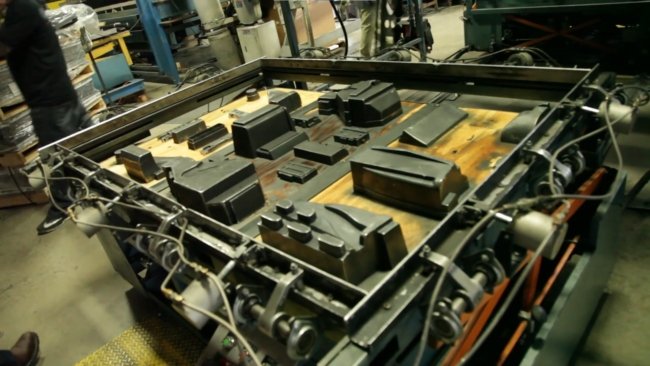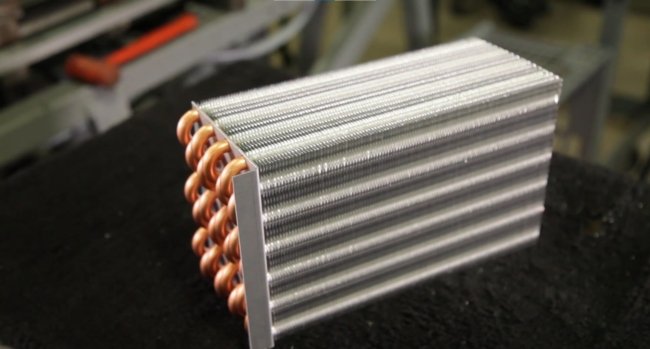
The magic of manufacturing lies within bulletproof procedures and people to make sure parts go out the door at an affordable, high-quality rate. After forty-five years in the business, Vintage Air has nearly perfected the art of high-performance air conditioning assembly and proved as much via a factory tour video.
Their process involves a medley of materials ranging from ABS plastic to aluminum fin to copper tube. The ABS is where it all starts as a full sheet is heated to 350 degrees then dropped onto an aluminum mold. A vacuum from underneath sucks the pliable material over various forms as it’s destined to become evaporator cases after cooling and trimming.
Heat exchanger coils are made from a giant spool of copper tubing that unwinds to be bent, cut to length, and stacked with aluminum fin. Feeder tubes on the ends will end up routing the refrigerant through the proper channels. A pressurized nitrogen test under water verifies that coils are leak-free before moving on. Heater cores go through a similar process, except they’re brazed copper.

That ABS evaporator case comes together with the coil, core, doors, and electronics to fashion a finished assembly. Each unit then goes through a final inspection process which includes checks on coil quality, door operation, electronic function, and blower motor rotation.
To make sure components reach their final destination in the same condition as when they leave San Antonio, Texas, boxes are filled with die-cut inserts and expandable foam packs specific to each application.
We can attest to the end result as our 1967 Plymouth Satellite is still kicking out the coolness after a trouble-free installation and two summers’ worth of cruising. For Vintage Air, it’s really as simple as this: quality creates comfort.












 Mopar Connection Magazine – The ONLY Daily Mopar Magazine © 2022. All Rights Reserved. Mopar Connection Magazine is the ONLY daily Mopar Magazine bringing you the latest Mopar news, technology, breaking news, and Mopar related events and articles. Find out the latest information about Mopar, Mopar products and services, stay up to date on Mopar enthusiast news, dealership information and the latest Mopar social media buzz! Sign up for the Mopar Connection Magazine newsletter for the latest information about new products, services and industry chatter. Mopar Connection Magazine is the best and only source you need to be a Mopar industry insider!
Mopar Connection Magazine – The ONLY Daily Mopar Magazine © 2022. All Rights Reserved. Mopar Connection Magazine is the ONLY daily Mopar Magazine bringing you the latest Mopar news, technology, breaking news, and Mopar related events and articles. Find out the latest information about Mopar, Mopar products and services, stay up to date on Mopar enthusiast news, dealership information and the latest Mopar social media buzz! Sign up for the Mopar Connection Magazine newsletter for the latest information about new products, services and industry chatter. Mopar Connection Magazine is the best and only source you need to be a Mopar industry insider! by
by